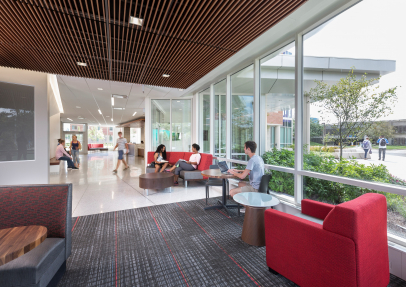Article appeared in the Jan + Feb issue of ACUHO-I's Talking Stick magazine
Community Values: Integrating non-revenue generating space into residence hall designs requires negotiation.
What separates college residence halls from a basic hotel or apartment building? Oftentimes, it is the community spaces designed to facilitate social interaction, academic collaboration, and personal development. Whether they are student lounges, music practice rooms, lecture halls, kitchens, exercise facilities, or any number of other options, these spaces are pivotal in enhancing the overall college experience and fostering a sense of belonging. There’s just one catch. They don’t generate any revenue, at least not directly.
Virtually every new residence hall construction or renovation project will face the fundamental challenge of balancing cost efficiency with creating gathering spaces of different sizes, shapes, and uses. This ongoing tug-of-war involves housing officers on one side who advocate for designs that cater to students' known desires for communal areas and, on the other, campus administrators pulling for financially efficient models with more beds and maximum revenue potential. The importance of community space is undeniable, yet in an era when construction and renovation costs are skyrocketing, finding ways to affordably provide such spaces is a significant challenge. Fortunately, in most cases, this back-and-forth struggle doesn’t end with just one side emerging triumphant. Rather, they navigate a complex array of issues to make decisions that best serve their students and the institution's broader goals.
Read the complete article: https://ts.acuho-i.org/january_2024/community_values.html





